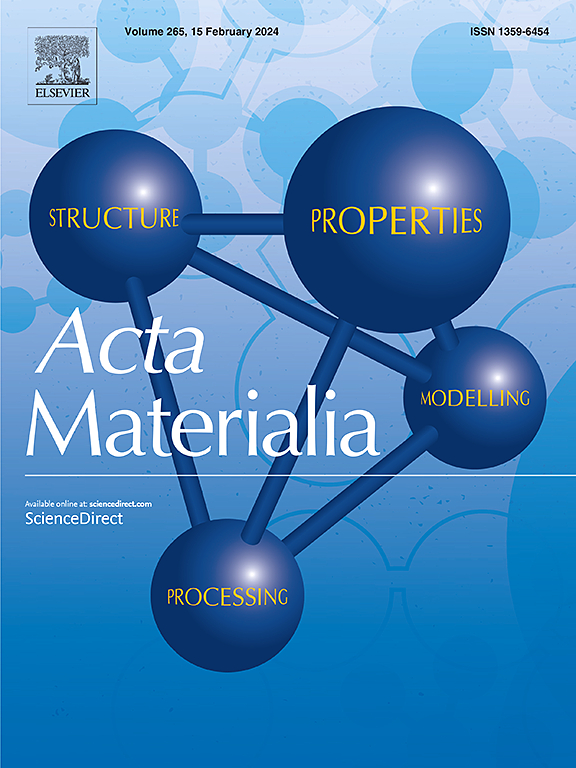Sticking, reflection, and abstraction behavior of hydrogen irradiated on (110) tungsten surfaces at 0.1-100 eV by molecular dynamics simulations using a machine learning potential
IF 9.3
1区 材料科学
Q1 MATERIALS SCIENCE, MULTIDISCIPLINARY
引用次数: 0
Abstract
Understanding the behavior of hydrogen isotopes is important for predicting mechanical property degradation and tritium retention in plasma-facing materials of fusion reactors. In this study, to assess the fundamental behavior of hydrogen incident on plasma-facing tungsten, we first constructed a machine learning moment tensor potential (MTP) for tungsten-hydrogen systems using density functional theory (DFT) calculation data as a training dataset. Validation tests confirmed that the MTP can reproduce relevant material properties in good agreement with experiments and DFT calculations. We then performed molecular dynamics (MD) calculations using the constructed MTP to simulate the behavior of hydrogen irradiated on the (110) surface of tungsten at 0.1-100 eV. It is confirmed that electronic stopping significantly affects the behavior of incident hydrogen and should therefore be considered in simulations. For hydrogen isotope effects on the sticking coefficient, since electronic stopping has the opposite effect to nuclear stopping, the isotope effects become less significant. With increasing incident energy in the range up to approximately 5 eV, the sticking coefficient decreases due to the increasing probability of reflection at the surface. In contrast, at higher incident energies, the absorption fraction increases because more hydrogen can reach depths below the escape depth, increasing the sticking coefficient. Pre-existing hydrogen atoms on the surface, namely surface coverage, affect not only the sticking probability but also the energy loss behavior and depth profile of the irradiated hydrogen. These results provide a comprehensive picture of the behavior and fate of incident hydrogen in plasma-facing tungsten.


基于机器学习电位的分子动力学模拟研究了0.1-100 eV辐照下氢在(110)钨表面的粘附、反射和抽象行为
了解氢同位素的行为对于预测聚变反应堆等离子体材料的力学性能退化和氚保留具有重要意义。在本研究中,为了评估氢入射等离子体钨的基本行为,我们首先使用密度泛函理论(DFT)计算数据作为训练数据集构建了钨氢系统的机器学习矩张量势(MTP)。验证试验证实,MTP可以再现与实验和DFT计算相吻合的相关材料特性。然后,我们使用构建的MTP进行分子动力学(MD)计算,模拟氢在0.1-100 eV照射在钨(110)表面的行为。证实了电子停止对入射氢的行为有显著影响,因此在模拟中应予以考虑。对于氢同位素对粘着系数的影响,由于电子停止与核停止的作用相反,同位素的影响变得不那么显著。随着入射能量的增加,在大约5 eV的范围内,由于表面反射的概率增加,粘着系数减小。相反,在较高的入射能量下,吸收分数增加,因为更多的氢可以到达逃逸深度以下的深度,增加了粘着系数。表面上预先存在的氢原子,即表面覆盖度,不仅影响附着概率,而且影响辐照氢的能量损失行为和深度分布。这些结果提供了入射氢在等离子体钨中的行为和命运的全面图景。
本文章由计算机程序翻译,如有差异,请以英文原文为准。
求助全文
约1分钟内获得全文
求助全文
来源期刊

Acta Materialia
工程技术-材料科学:综合
CiteScore
16.10
自引率
8.50%
发文量
801
审稿时长
53 days
期刊介绍:
Acta Materialia serves as a platform for publishing full-length, original papers and commissioned overviews that contribute to a profound understanding of the correlation between the processing, structure, and properties of inorganic materials. The journal seeks papers with high impact potential or those that significantly propel the field forward. The scope includes the atomic and molecular arrangements, chemical and electronic structures, and microstructure of materials, focusing on their mechanical or functional behavior across all length scales, including nanostructures.
 求助内容:
求助内容: 应助结果提醒方式:
应助结果提醒方式:


